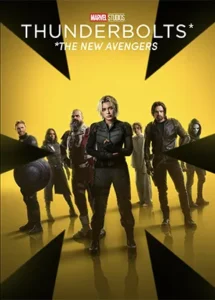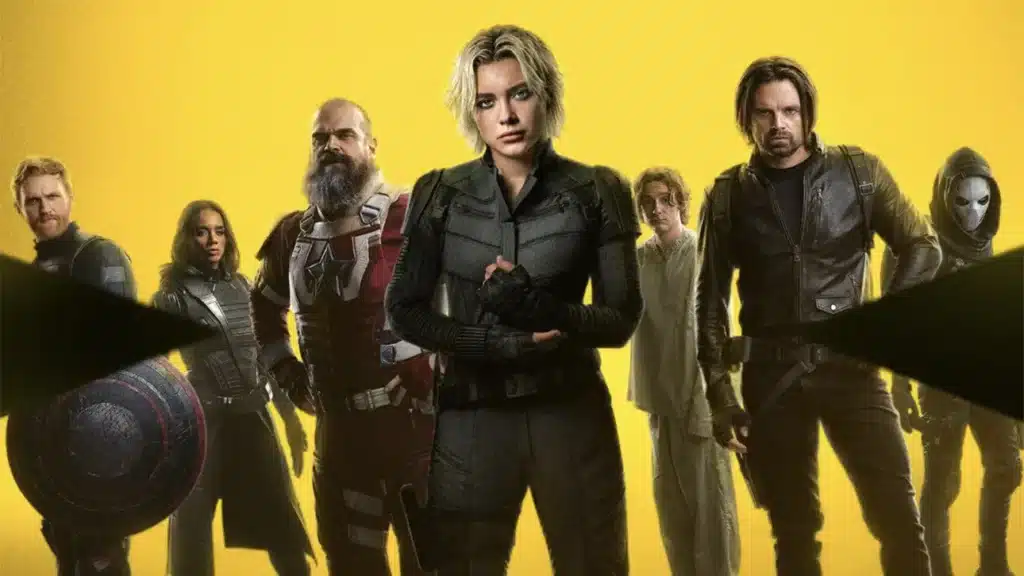
What Thunderbolts communicates about teamwork taps into one of the greatest social science mysteries of contemporary history: the nature of individual-group relation.
 Thunderbolts Jake Schreier Marvel 2 May 2025
Thunderbolts Jake Schreier Marvel 2 May 2025
I went into the movie theater knowing that, based on what I had heard about Thunderbolts (2025), there would be themes I wanted to write about. Two of those themes were the persistence of voids even when there is a highly efficacious match of skills and responsibilities, and the power of words in materializing hope.
However, when it came time to put something on paper, a third theme emerged as the most sensible. What Thunderbolts communicates about teamwork taps into one of the greatest social science mysteries of contemporary history: the nature of individual-group relations. A mystery, I believe, one of my greatest intellectual influences sheds some important insight on.

“That we speak at all of families…and that we note similarities and differences between them are enough to establish the fact that we observe structural features and relations in groups. To compare or contrast two families presupposes that we have recognized a structure despite the differences in membership.” – Solomon Asch
In his pioneering book, Social Psychology (1952), psychologist Solomon Asch argues that dominant social science theories, past and present, either place too much emphasis on individuals or too much emphasis on groups when trying to understand what separates humans from non-human animals. For Asch, social life could not be understood by viewing individual thoughts and actions as completely separate from or completely determined by others. Instead, what makes humans remarkably distinct is that, through interacting with others, we help bring about and are influenced by social forces that are greater than the sum of their parts.
The essence of this quote is supported by narrative events in Jake Schreier‘s superhero political drama, Thunderbolts. Replace “families” with “team” and hopefully, the connection becomes clearer. [Spoilers ahead.] Certain events in the film broadly align with Asch’s ideas concerning individual-group relations. Ideas that not only help explain what makes Yelena Belova (Florence Pugh), Bucky Barnes (Sebastian Stan), The Red Guardian (David Harbour), John Walker (Wyatt Russell), and Ghost (Hannah John-Kamen) an interesting team.
This offers a useful lens through which to view the film’s symbolism, particularly in its use of a structure known as the vault. With instructions from CIA Director Valentina Allegra de Fontaine (Julia Louis-Dreyfus) to kill each other, they went into the vault as individual contractors and came out of the vault as a transformed team.
Thunderbolts Fill the Void
“[People] discover a need to explain their existence and to give their work significance….They enter a realm of purpose that links them to those who have preceded and those who will follow them; they want their work to outlast them.”
One characteristic of social interaction, according to Asch, is that we are more aware of and care about the meaning of our thoughts and actions. In Thunderbolts, this is largely communicated through the various “voids” the characters try to fill. From Bucky becoming a Congressman to John struggling to be a “regular” dad after failing as Captain America, the film makes it clear that something is missing in their lives.
This is exemplified by two early scenes involving Yelena. First, after completing a job for Valentina, she tells her she is not fulfilled and wants to put her skills toward different ends. The second involves her first meeting with Robert (Bob) Reynolds (Lewis Pullman), who later becomes The Sentry, in the vault. When he reveals to her his struggles with loneliness, she tells him that ultimately they are all alone in this world, and therefore she does not care what he does with his life when they escape.
Considering Bucky, John, and Yelena each struggle to come to terms with how their past actions have harmed others, these events suggest that, on some level, our relationships with others help give our “work” meaning.
Thunderbolts Dares to Turn Toward Others
“The paramount fact about social interaction is the participants stand on common ground, that they turn toward one another [Asch’s emphasis], that their acts interpenetrate and therefore regulate each other.”
Another feature of human relations is that through social interaction, individuals share in one another’s “psychological space”, such that the actions and thoughts of others affect us and vice versa. I briefly explore this notion in my 2023 and in-progress Luke Cage papers while attempting to ground his superhero mission within his relationship to Harlem. We see this feature play out in Thunderbolts in subtle and not-so-subtle ways.
In terms of subtlety, Yelena eventually reverses course on what she told Robert about being alone. During Thunderbolt’s final act, she tells him that she was wrong and that the only way to deal with the voids within us is to let them out with others. When Yelena disappears and is presumed dead, Ghost floats the idea that she may still be alive and there may be a way to get her back. This suggestion is significant, given that Ghost’s orientation in most of the film is someone who did not trust or have time for others.
In terms of not-so-subtle, the notion of interpenetration is illustrated through Yelena’s and subsequently the other characters’ decisions to enter Bob’s “void”. In this apparent mental space, they are not only able to find Yelena; they are able to experience the events contributing to his sense of despair and loneliness, and work together to help him find ways to combat them.
On some level, these actions are informed by prior interactions, and due to the “interpenetrating” nature of those actions, they likely contribute to the formation of new ideas and understandings concerning themselves and those with whom they have interacted closely.
Thunderbolts Puts the Effort into Becoming a Team
“Once the process described is in motion it is no longer the individual ‘as such’ who determines its direction, nor the group acting upon the individual as an external force, but individuals working with, for, or against each other….”
In addition to being motivated by meaning and shaped by our relationships with others, as members of social groups, we become part of something greater than the sum of its parts. By the end of Thunderbolts, this appears to be the case for Yelena, Bucky, The Red Guardian, John, and Ghost. Despite John naming the team the Thunderbolts, after Yelena’s childhood sports team, it is their actions that stamp their status as a team.
This is regardless of whether they fully acknowledge themselves as such. From confronting Valentina and The Sentry, protecting civilians, and rescuing Bob from his own thoughts, they act as a group of individuals transformed not by circumstance, but intentional relationships. A far cry from Yelena telling Ghost earlier in the film that ultimately, their situations are the same as the recently deceased Taskmaster’s (Olga Kurylenko): living a rough life, killing many people, and eventually being killed.
Thunderbolts Shows That We’re Better Together
Once Valentina’s plan to turn Bob into The Sentry is revealed, she tells her assistant that, despite being raised to distinguish between good and bad people, over time, we realize there are only bad or worse people. By the end of Thunderbolts, the unlikely transformation of these scarred individuals into a purpose-driven team grounded in interdependent relationships eschews both individual and group-based explanations.
The Thunderbolts are the result of the messy middle of social interaction, where agency, vulnerability, and mystery combine. A combination that both challenges Valentina’s view of people and reminds us of our potential to become better versions of ourselves through our relationships with others.


